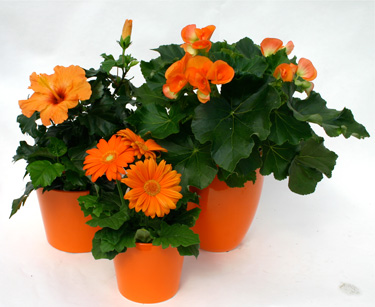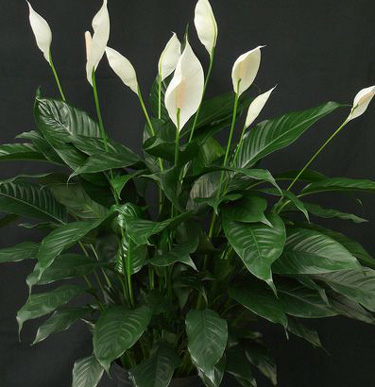Bringing nature indoors
Along with the retro revival of all things mid-century, houseplants are making a big comeback in fashionable living spaces worldwide. They haven’t been so popular since the seventies. Even macramé hangers are right on trend! This all bodes well for happy, healthy homes.
When short winter days mean all the daylight hours are taken up at work some of us never even get to see our gardens during the week. Having beautiful indoor plants around us promotes a happy state of mind. What’s more, houseplants are the best looking air-fresheners around.
Though not a substitute for adequate ventilation, plants are scientifically proven to improve the air we breathe, absorbing carbon dioxide and replacing it with oxygen. Common building materials, paints, adhesives, cleaning products, and furnishings emit gases that can lead to headaches, nausea and fatigue. Houseplants can literally clean the air of these toxins.
Being surrounded by living plants makes us feel more relaxed and positive, psychologists say. Certainly, a leafy green desk companion has a psychological advantage over piles of clutter and paper. It could also give you the oxygen boost you need to think more clearly.
If you don’t have the budget for a larger plant, buy a small one and enjoy nurturing it into a lavish specimen. Simply repot it once a year, ideally in spring, into a slightly larger pot with fresh potting mix.
And when your houseplants get past their best, don’t stress. Enjoy them while they last - longer than a bunch of flowers of the same price – and then replace them with a new one.
Top foliage plants that last the distance indoors
Spathiphyllum (peace lilies)
Phalaenopsis (moth orchid)
Sansevieria trifasciata (Mother-in-law’s tongue) Ficus benjamina (weeping fig)
Ficus (rubber tree)
Aspisdistra elatior (cast iron plant) Dracaena (dragon plants)
Schefflera arboricola (umbrella tree) Rhapsis exelsa (lady palm)
Monstera delicosa (fruit salad plant) Philodendron
Syngonium
Ardisia (coral berry)
Howea forsteriana (kentia palm) Bromeliads
Winter Houseplant Care
- Water very sparingly. In winter, the potting mix should be dry on top and just moist (like a squeezed out sponge) beneath. Succulents and cacti should be kept practically dry.
- Shift topical plants away from cold draughts. Find a warm part of the house where there is bright light but not direct sun.
- Move plants away from heaters and fires and away from direct sun. The sun is at a lower angle in winter.
- Raise the humidity around precious plants by placing them on a dish of stones filled with water so that the pot sits just above the water. Heaters create dry air.
- Wipe the dust from leaves with a damp cloth. Add spraying oil for extra shine and to kill scale insects (but don’t use oil on palms or ferns).
- Keep watch for sucking insect pests such as scale and mealy bug. Move infected plants away from others.
5-Jun-2015

Brightly coloured flowering plants make a room look loved, especially in winter - gerberas, begonias, and hibiscus.

Red anthurium & begonia

Spathiphyllum


